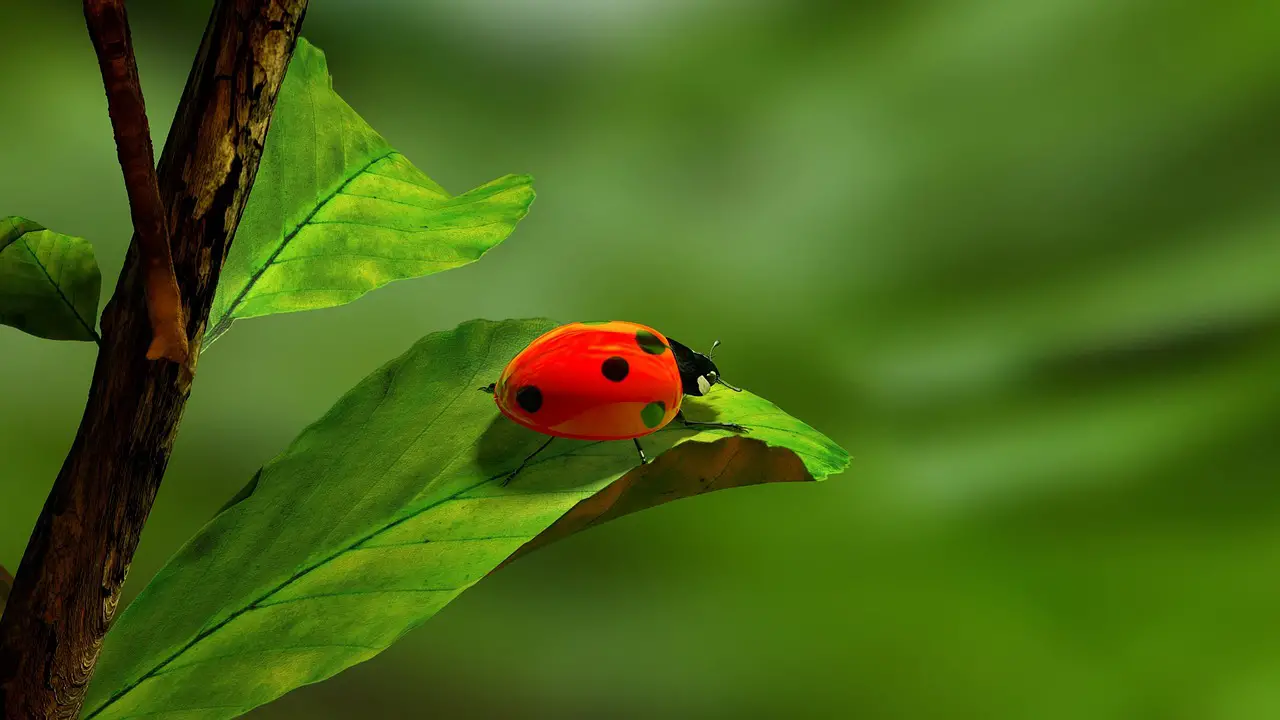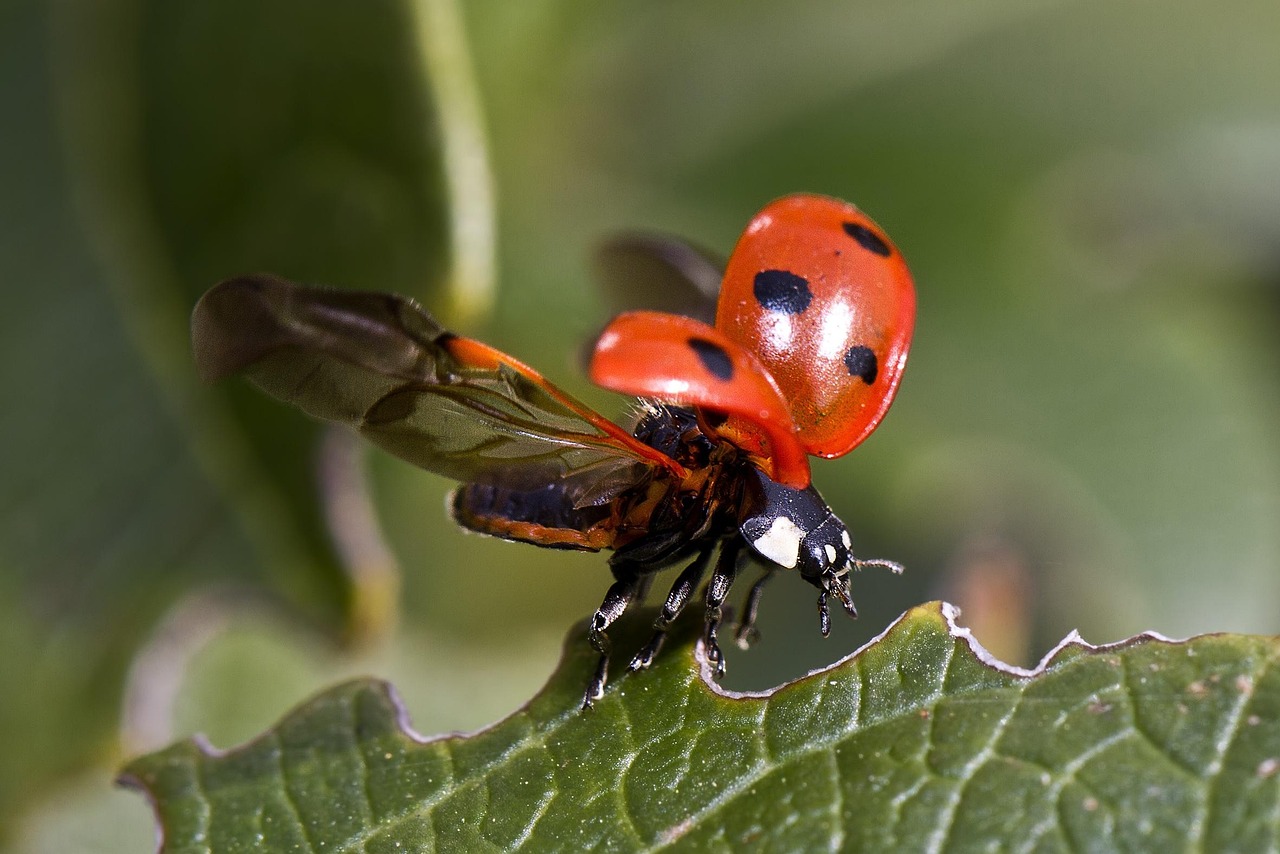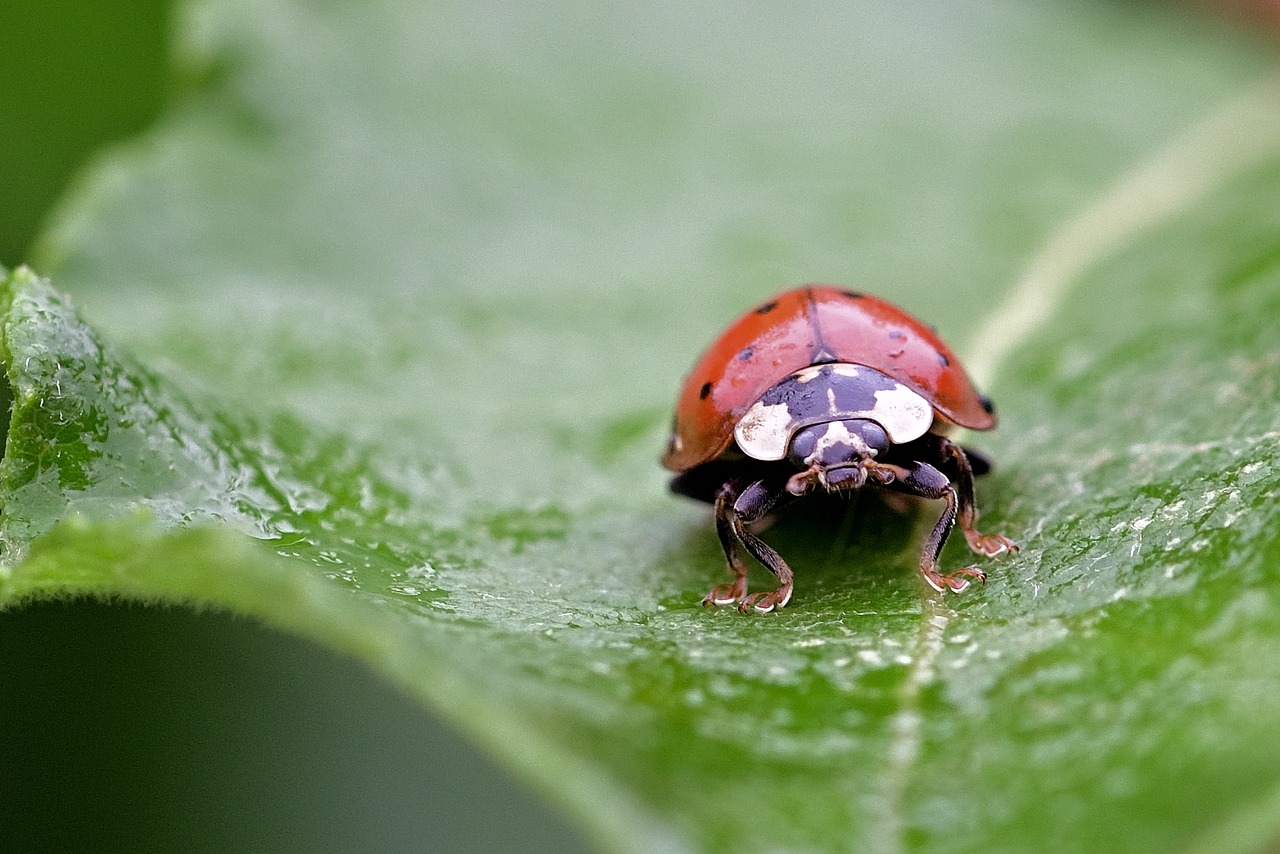Ladybugs are often seen as charming little creatures with their vibrant colors and distinctive spots. However, there is much more to these insects than meets the eye. Understanding the life cycle of ladybugs is crucial to appreciating their role in ecosystems and their benefits to gardens and agriculture. This article will delve into the fascinating world of ladybug larvae and eggs, revealing secrets about their development and the stages they undergo.
Ladybugs, also known as ladybird beetles, belong to the family Coccinellidae. They are found all over the world, with over 5,000 species identified. These insects are renowned for their effectiveness as natural pest controllers, primarily because both adults and larvae feed on aphids and other harmful pests. The life cycle of a ladybug consists of four distinct stages: egg, larva, pupa, and adult. Each stage has unique characteristics and plays a critical role in the ladybug’s development.

The ladybug’s life begins as an egg. Typically, a female ladybug lays between 10 to 50 eggs at a time, usually on the underside of leaves close to aphid colonies. This strategic placement ensures that the newly hatched larvae have immediate access to food. The eggs are small, oval-shaped, and often yellow or orange in color. Within a few days, these eggs will hatch into larvae.
| Stage | Description | Duration |
|---|---|---|
| Egg | Small, oval-shaped eggs laid on plant leaves. | 3-10 days |
| Larva | Worm-like appearance; black with bright orange spots. | 2-4 weeks |
| Pupa | Resting stage where transformation occurs. | 5-10 days |
| Adult | Fully developed ladybug with characteristic colors. | Varies based on species |
The Larval Stage
After hatching from the eggs, ladybug larvae enter their larval stage. This stage is often overlooked but is vital for growth. Ladybug larvae are elongated and resemble small alligators with a distinct black body covered in tiny hairs. They can often be found crawling on plants, where they actively hunt for food. During this stage, a single larva can consume thousands of aphids before entering the pupal stage.
The larval stage lasts approximately two to four weeks. During this time, the larvae will molt several times, shedding their skin as they grow. Each molt allows for increased size and development of features that will be important in their adult form. The larvae are not just voracious eaters; they are also incredibly efficient predators, helping control pest populations in gardens and agricultural fields.
Interestingly, ladybug larvae are often mistaken for pests due to their appearance. However, they play a crucial role in maintaining ecological balance. By consuming harmful insects like aphids and mites, they contribute to healthy plant growth and agricultural productivity.
As the larval stage comes to an end, the ladybug will seek out a safe place to pupate. This transition is essential as it leads them into the next phase of their life cycle: the pupal stage. Here, they will undergo an incredible transformation into adult ladybugs.
The Pupal Stage: A Time of Transformation
Once the ladybug larva has found a secure location, it enters the pupal stage, which is a critical phase of its life cycle. During this stage, the larva undergoes a remarkable transformation, changing from a larva into an adult ladybug. This metamorphosis can take anywhere from five to ten days, depending on environmental conditions such as temperature and humidity.
The pupal stage is characterized by a few key features:
- Resting Phase: The pupa is typically immobile and does not feed. This resting phase allows the body to reorganize and develop new structures.
- Color Changes: As the pupa matures, it may change colors, often becoming lighter as it approaches the adult stage.
- Protection: The pupa is often hidden from predators in a safe location, such as under leaves or in crevices, providing necessary protection during this vulnerable period.
Metamorphosis: The Process of Change
Metamorphosis is an incredible process that involves complex biological changes. Inside the pupa, the larval tissues break down and reorganize into adult structures. This process includes:
- Development of Wings: The most noticeable change during metamorphosis is the formation of wings. These wings are initially crumpled and soft.
- Formation of Antennae: Antennae develop further, becoming more elongated and sensitive, essential for navigation and sensing the environment.
- Coloration: The characteristic red or orange coloration with black spots begins to emerge on the wings during this stage.
After about a week, the pupa will begin to split open. This marks the end of the pupal stage and the emergence of a new adult ladybug.
The Emergence of Adult Ladybugs

Upon emerging from the pupa, the adult ladybug is initially soft and pale. It takes some time for the wings to harden and assume their bright colors. During this period, the new adult is particularly vulnerable to predators. The newly emerged ladybug will often remain in a sheltered location until it has fully developed its protective exoskeleton.
As adults, ladybugs are known for their vibrant colors and distinct markings. These colors serve multiple purposes:
- Warning Coloration: Bright colors can deter potential predators by signaling that they may be toxic or unpalatable.
- Courtship Displays: Colors and patterns play a role in attracting mates during the breeding season.
Life Expectancy and Reproduction
The life expectancy of an adult ladybug can vary significantly based on species and environmental factors. On average, ladybugs live from one year to three years. During their lifetime, ladybugs can reproduce multiple times. A single female can lay hundreds of eggs in her lifetime, ensuring that the next generation continues to thrive.
This reproductive strategy is crucial for maintaining their population, especially as many ladybug larvae do not survive to adulthood due to predation and environmental challenges. Understanding these life stages helps in appreciating their role in ecosystems and encourages practices that support their populations.
Ladybug Behavior and Habitat Choices


Understanding ladybug behavior and their habitat preferences is essential for appreciating their life cycle. Ladybugs are highly adaptable insects that thrive in various environments, ranging from gardens to forests. Their behavior is closely linked to their life stages, especially during the larval and adult phases.
Habitat Preferences
Ladybugs typically prefer habitats that provide ample food sources and shelter. Common habitats include:
- Gardens: Rich in plants, gardens attract aphids and other pests, making them a perfect feeding ground for ladybugs.
- Fields: Agricultural fields often host numerous crops that can support ladybug populations through pest control.
- Forests: Leafy environments provide both food and shelter from predators, ideal for both larvae and adults.
These environments allow ladybugs to find food easily and create safe places for laying eggs. The presence of aphids significantly influences where ladybugs choose to settle, as it ensures a reliable food source for their offspring.
Feeding Habits
Ladybugs are primarily herbivorous; however, their diet mainly consists of other insects, particularly aphids. An adult ladybug can consume up to 50 aphids a day. The feeding habits change slightly between the larval and adult stages:
- Larval Feeding: Ladybug larvae are voracious feeders, consuming large quantities of aphids and other soft-bodied pests. This feeding frenzy is crucial for their growth and development.
- Adult Feeding: Adult ladybugs continue to feed on aphids but may also consume pollen and nectar, especially during mating season. This diversifies their diet and enhances their energy levels.
This predatory behavior not only aids in their survival but also plays an essential role in controlling pest populations in various ecosystems.
Challenges Faced by Ladybug Populations
Despite their beneficial roles, ladybug populations face several challenges that impact their survival and reproduction. Awareness of these issues is critical for conservation efforts.
Environmental Stressors
Ladybugs are sensitive to environmental changes. Some of the primary stressors include:
- Pesticides: Chemical pesticides used in agriculture can be harmful to ladybugs, reducing their populations significantly.
- Habitat Loss: Urbanization and land development often lead to the destruction of natural habitats, limiting available resources for ladybugs.
- Climate Change: Changes in temperature and weather patterns can severely affect ladybug life cycles, influencing when they emerge and how long they can survive.
Predation and Competition
Ladybugs themselves are not immune to predation. Various predators, including birds, spiders, and larger insects, pose threats to both larvae and adults. Additionally, competition for resources can arise with other beneficial insects, especially during peak seasons.
To counteract these challenges, ladybugs utilize several survival strategies. They often exhibit a behavior known as “reflex bleeding,” where they exude a small amount of fluid from their joints when threatened. This fluid has a foul taste and can deter predators from consuming them.
The Importance of Ladybugs in Ecosystems
Ladybugs play a vital role in their ecosystems. By controlling pest populations, they contribute significantly to agricultural health and biodiversity. Their presence is often an indicator of a balanced ecosystem. Furthermore, their larvae serve as a food source for various creatures within the food chain, highlighting their importance beyond just pest control.
Promoting environments where ladybugs can thrive not only benefits farmers but also supports overall ecological well-being. Encouraging practices such as organic gardening, reducing pesticide use, and planting native flowers can help sustain healthy ladybug populations.
Conservation Efforts for Ladybug Populations
Given the ecological importance of ladybugs, various conservation efforts are underway to protect their populations. These initiatives aim to create habitats conducive to ladybug survival and promote awareness of their roles in ecosystems. Some effective strategies include:
- Creating Ladybug Habitats: Planting diverse gardens with native plants can attract ladybugs. Including flowering plants that bloom at different times of the year ensures a consistent food supply.
- Reducing Pesticide Use: Encouraging farmers and gardeners to adopt organic practices helps minimize chemical exposure to ladybugs and other beneficial insects.
- Public Education: Workshops and educational programs can increase awareness about the importance of ladybugs, leading to more community support for conservation efforts.
Additionally, citizen science projects allow individuals to contribute to data collection on ladybug populations. This information can help researchers monitor trends and develop effective conservation strategies.
Ladybug Myths and Fascinating Facts
Ladybugs are steeped in various myths and cultural beliefs across the world. These charming insects have been associated with good luck and protection. Here are some intriguing facts about ladybugs that might surprise you:
- Symbol of Good Luck: In many cultures, spotting a ladybug is considered a sign of good fortune. It is believed that if a ladybug lands on you, you will receive good news soon.
- Variety of Colors: While red with black spots is the most recognized color pattern, ladybugs come in various colors, including yellow, orange, and even black.
- Life Span Variability: Depending on the species and environmental conditions, some ladybugs can live up to three years, while others may only survive a few months.
These fascinating facts not only highlight the cultural significance of ladybugs but also emphasize their diversity in nature.
Final Thoughts
The life cycle of ladybugs, from eggs to larvae to adults, reveals much about their adaptability and importance in ecosystems. Their role as natural pest controllers makes them invaluable allies for gardeners and farmers alike. By understanding their life stages, behaviors, and the challenges they face, we can take meaningful steps to protect these beneficial insects.
Conservation efforts are essential to ensure that ladybug populations remain healthy and robust. With simple actions like creating inviting habitats and reducing pesticide use, individuals can make a significant impact on their survival. Furthermore, promoting awareness about these charming beetles can inspire communities to support ecological balance.
As we continue to learn more about ladybugs and their life cycles, we not only appreciate their beauty but also recognize their vital contributions to our environment. Protecting them is not just about preserving a species; it is about safeguarding the health of our ecosystems for future generations.
